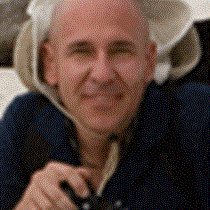Genovesa Island: Darwin Bay & Prince Philip’s Steps
The sun emerged among the clouds as we arrived to Genovesa Island, and the National Geographic Endeavour was received by several juvenile red-footed boobies that flew along with our ship. It began as a cloudy day, but as the hours passed the sun came out.
The visit to the beach at Darwin’s Bay was a great introduction to this island, which probably has the biggest colony of red-footed boobies in the Galápagos Islands. After landing on the island we started to hear the sounds made by the juvenile boobies asking for a meal from their parents; above us, frigates also patrolled the area, searching for some naïve red-footed booby to harass and stress so that it would regurgitate its meal, which they would then steal.
Just after landing there were several swallow-tailed gulls with their young chicks, sitting on the lava rocks or on the beach – a very impressive scene, like going back to a paradise of fearless creatures. The opunthia cacti here have soft spines and there are no land reptiles on this island. As the walk progressed the sun began to come out of the clouds and it got a little hot, but by then it was already time start a new activity in the cool waters of this protected bay.
Snorkeling was spectacular; for many it was the first time to meet a hammerhead shark in the water – well, not only one hammerhead – some people had the chance to meet several, and as bonus, they also saw a small manta ray. It was impossible to believe that this was going to get better, but it did.
During the afternoon walk we walked right next to some male frigates, some with a red pouch ready to the displayed to attract the females passing by, and at the end of this walk we saw an owl along the lava fields, the perfect ending for such a fantastic trip.
As we started to sail off and leave Genovesa Island we had the escort of several juvenile red-footed boobies and after the sun set, the company of the swallow-tailed gulls on our way to Baltra during the night.




